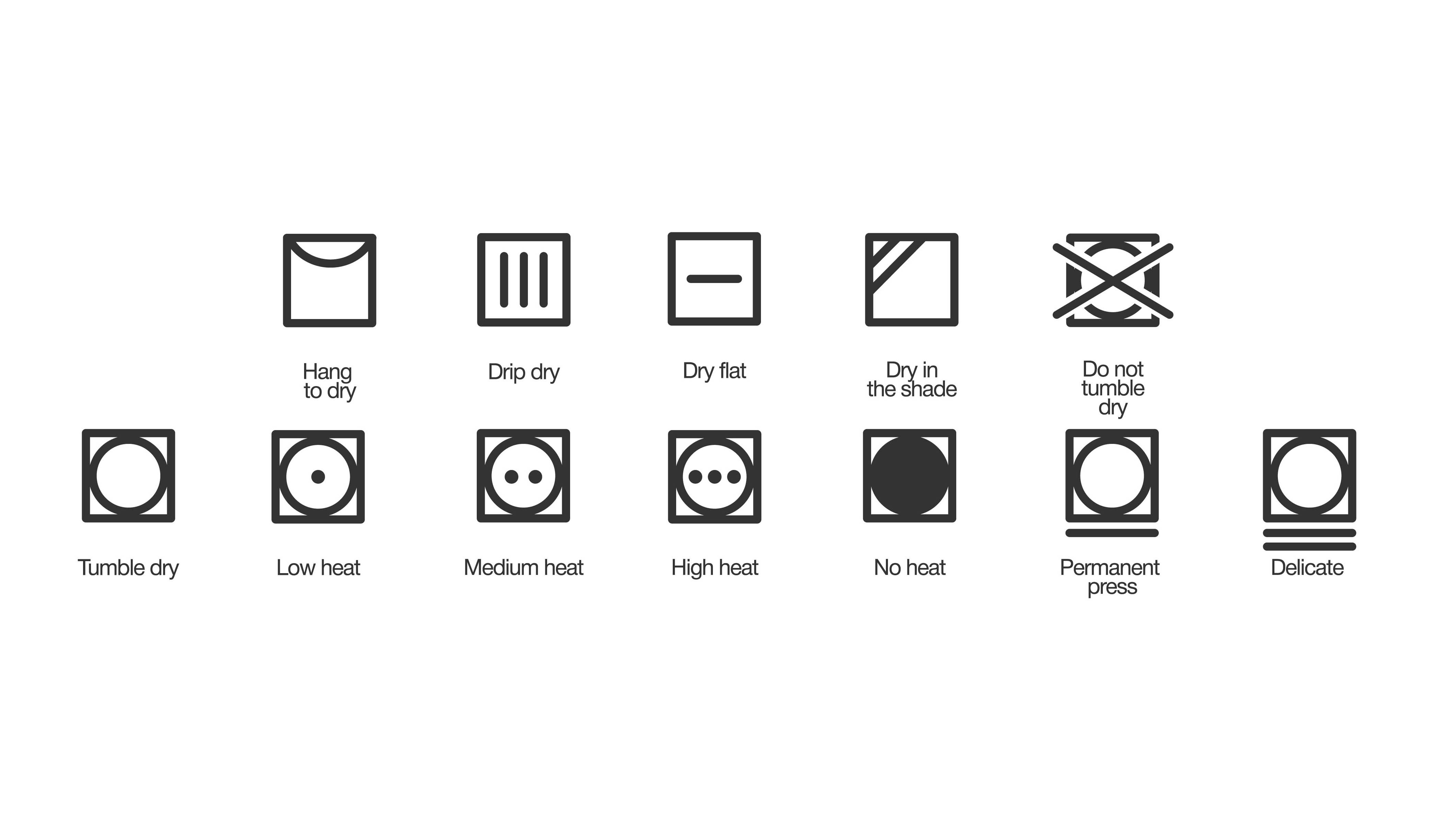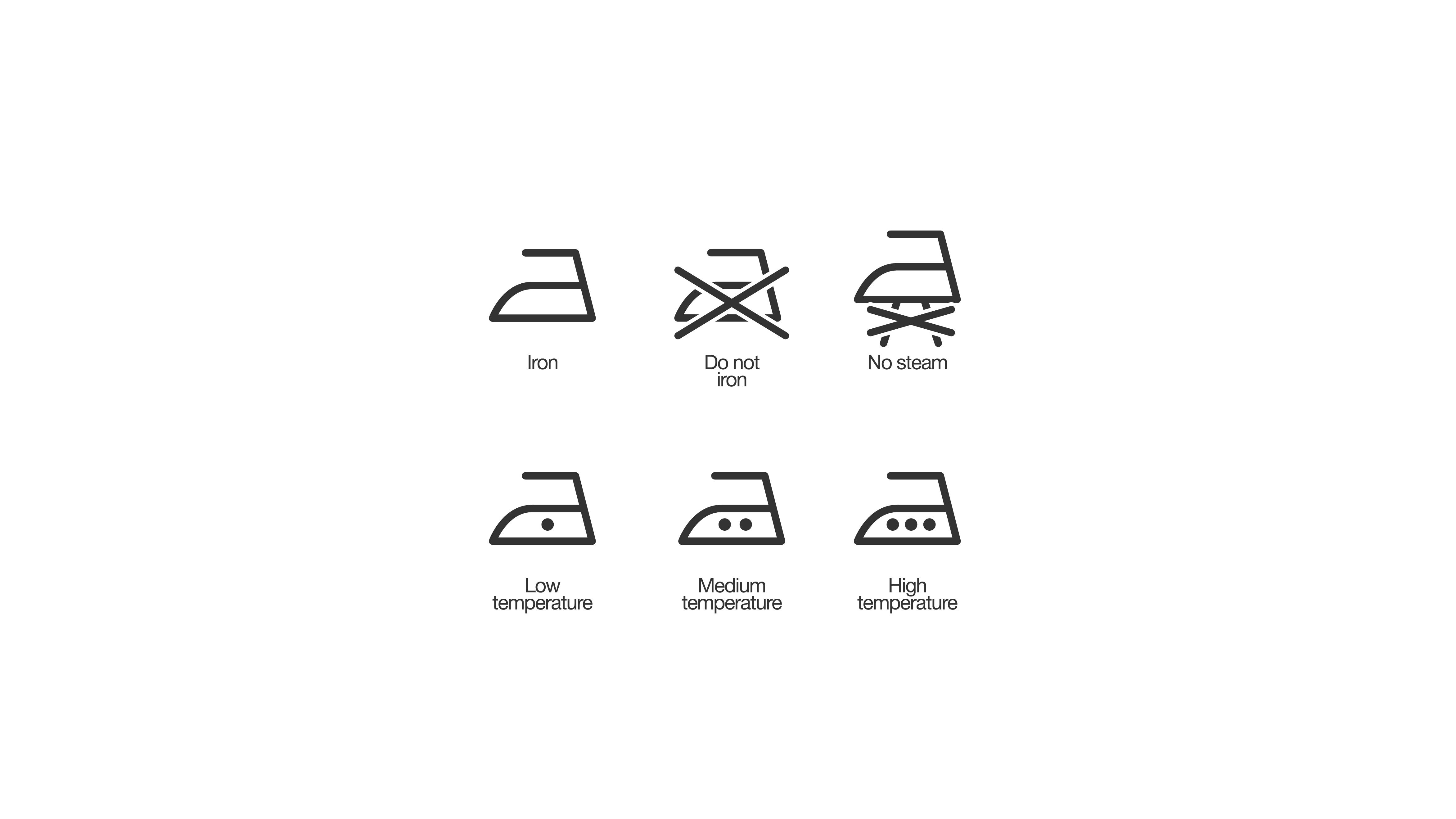What do laundry symbols mean? A guide to all care labels

It’s happened to most of us: we’ve had to wash a brand new item of clothing, only to be perplexed by the laundry symbols on the tag. It’s a horrible feeling when you set the temperature and program on your washing machine and simply hope for the best.
If you have only a basic understanding of laundry symbols — or if you simply need a refresher — we’ve pulled a guide together to finally put this issue to bed. Here’s everything you need to know about laundry symbols and what they mean.
You can also save money by these 8 ways to ditch the clothes dryer and save energy.
Washing Symbols

These ‘tub’ symbols indicate which temperature and spin cycle to use, or whether the clothes can be machine washed at all! It’s essential that these settings are correct, otherwise it can lead to damage including shrinkage and colors running.
The basics are easy to understand; temperature is indicated by the number of dots and the cycle is recommended by the number of lines underneath the tub. One dot is for 30 degrees Celsius (often the "cold" setting) and two dots is 40 degrees C (often the "warm" setting). Each extra dot adds an additional 10 degrees C.
A symbol with one line underneath it means you can machine wash an article of clothing on the permanent press cycle. If it has two lines underneath, then you should use the delicate cycle. Another common symbol is a tub with a hand in it, which indicates hand-wash only.
Look out for tubs which have an X through them, as this means do not machine wash. These care labels may suggest dry cleaning instead which is a single circle.
Get instant access to breaking news, the hottest reviews, great deals and helpful tips.
Drying Symbols

Checking the drying symbols is just as important as the wash symbols. This is what causes the majority of shrinkage if you get it wrong — picture a jumper that can only fit a teddy bear! These can appear a little more complex than wash symbols, but once you know what to look for, they’re much less intimidating.
Clothes can be air dried or tumble dried, so that’s the first thing to decipher. Tumble drying symbols have a circle in a square, whereas line drying has lines in a square. If it is suitable for tumble drying, the number of dots represents the temperature — the more dots, the higher temperature it can take. If the circle is filled in, then you should dry it with no heat.
As with wash symbols the lines underneath the square indicate if you should use the permanent press or delicate cycle. Remember to look out for the X again as this means it shouldn’t go in your dryer.
Bleaching Symbols

Even bleaching instructions are on the care label. These look like triangles and there’s only three options: a single triangle means you can use bleach, an X through the triangle means you can’t, and a triangle which has two diagonal lines through it indicates you should only use non-chlorine bleach.
Ironing Symbols

Most of us will avoid ironing at any cost! But, when needs must, the last thing you want to do is damage your clothes in the process. These symbols are quite easy to spot as they appear as little irons and, as you’d expect, they have dots on them which relate to the temperature — more dots means you can use the iron at a higher level. Another one to look out for is a little iron logo with a cross over lines coming out underneath — this means don’t use steam. If the X covers the whole iron, then you shouldn’t be ironing that article of clothing.

Katie Mortram used to be a Homes Editor for Tom's Guide, where she oversaw everything from kitchen appliances to gardening tools, as well as smart home tech. Specializing in providing expert advice for cleaning and home manintenance, she now works as Household Advice Editor for Good Housekeeping.
